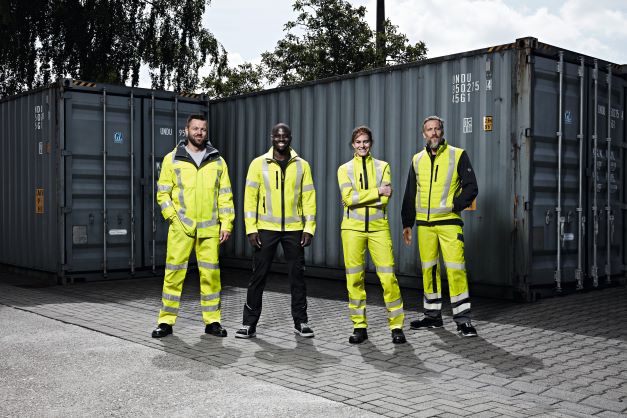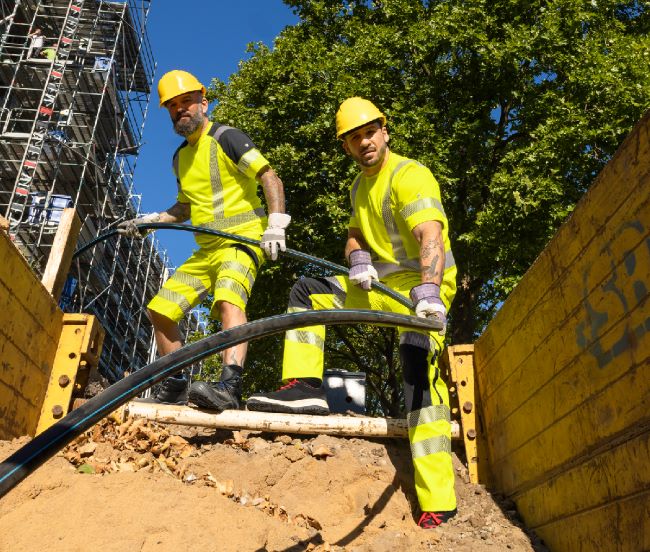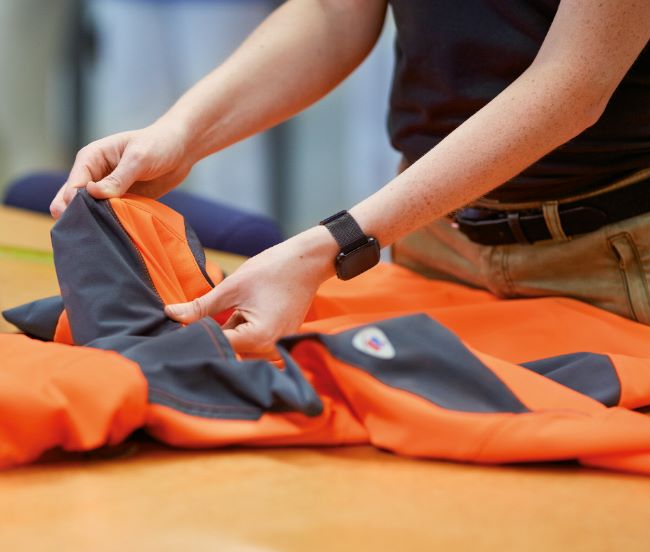Smart fabric blends
A factor that can hardly be overestimated is wearing comfort. In this respect, the expectations of wearers have risen sharply. This presents manufacturers with challenges. For unlike workwear, which is not subject to any standards, protective clothing must meet the high demands of the standard and offer lasting safety. At the same time, however, it should be so light and comfortable that employees can wear it all day long without any problems and feel permanently comfortable in their clothing.
How can protective function and lightness be combined? "For example, by using fabric blends with a stretch content that are comparatively light and yet very durable and resistant," explains Heike Altenhofen. A very large contribution to the perceived lightness is also achieved by patched, segmented reflective stripes, as BP uses in the products of the new BP Hi-Vis Stretch collection. The high-visibility clothing thus loses a lot of weight, while freedom of movement and comfort increase.
Ergonomics and modern design
And the ergonomics of road construction clothing, achieved for example through intelligent cut design, also play a major role. "If the clothing adapts to the wearer's movements and people do not have to work against resistance, they automatically perceive the PPE as much lighter," the expert knows.
With regard to functionality, it often comes down to small details that make a big difference. One point that is not necessarily thought of in connection with high-visibility clothing, but which is also important, is design. Here, too, the demands have grown. "This also has a lot to do with the fact that road construction workers take pride in their important work. People want protective clothing that looks good and that underlines their professionalism."











